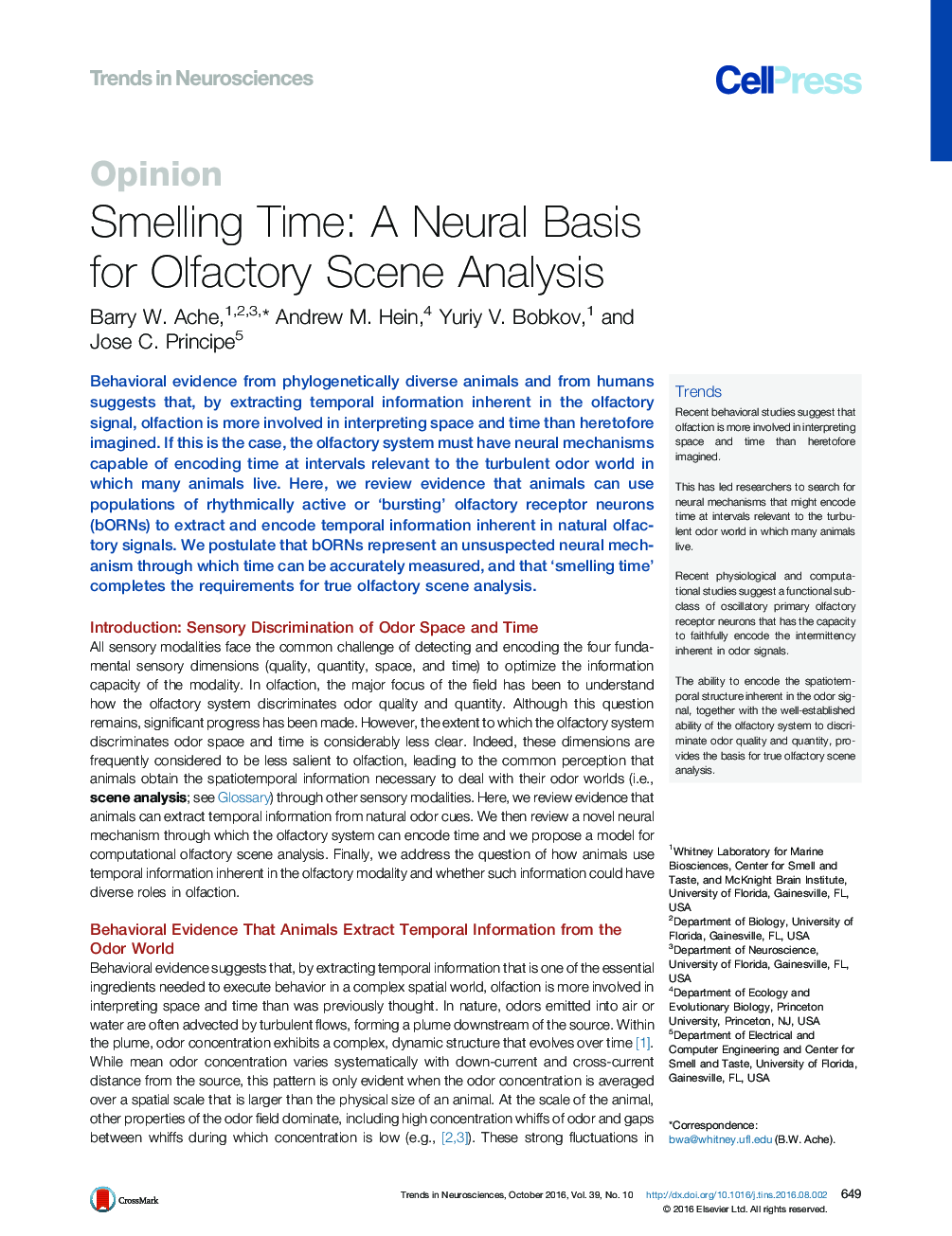| Article ID | Journal | Published Year | Pages | File Type |
|---|---|---|---|---|
| 4354078 | Trends in Neurosciences | 2016 | 7 Pages |
Behavioral evidence from phylogenetically diverse animals and from humans suggests that, by extracting temporal information inherent in the olfactory signal, olfaction is more involved in interpreting space and time than heretofore imagined. If this is the case, the olfactory system must have neural mechanisms capable of encoding time at intervals relevant to the turbulent odor world in which many animals live. Here, we review evidence that animals can use populations of rhythmically active or ‘bursting’ olfactory receptor neurons (bORNs) to extract and encode temporal information inherent in natural olfactory signals. We postulate that bORNs represent an unsuspected neural mechanism through which time can be accurately measured, and that ‘smelling time’ completes the requirements for true olfactory scene analysis.
TrendsRecent behavioral studies suggest that olfaction is more involved in interpreting space and time than heretofore imagined.This has led researchers to search for neural mechanisms that might encode time at intervals relevant to the turbulent odor world in which many animals live.Recent physiological and computational studies suggest a functional subclass of oscillatory primary olfactory receptor neurons that has the capacity to faithfully encode the intermittency inherent in odor signals.The ability to encode the spatiotemporal structure inherent in the odor signal, together with the well-established ability of the olfactory system to discriminate odor quality and quantity, provides the basis for true olfactory scene analysis.
